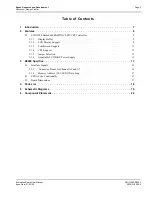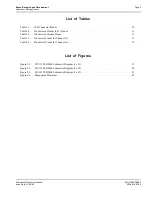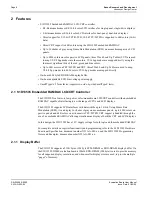
Epson Research and Development
Page 17
Vancouver Design Center
Evaluation Board User Manual
S5U13505-D9000
Issue Date: 01/02/05
X23A-G-002-04
3.1.2 Memory Address (CS#, M/R#) Decoding
The S1D13505 is a memory-mapped device for both the registers and the display buffer access. The
specific memory address is solely controlled by the CS# and M/R# decode logic. The memory space
requirements are:
• A 2M byte linear address range for the display buffer.
• 47 bytes for the registers.
With the FPGA code that comes with this board, the registers are located at 0x12000000 and the
display buffer is located at 0x12200000.
3.2 FPGA Code Functionality
The D9000/ODO is a flexible hardware/software development system designed for use with the
Microsoft Windows CE operating system. It is designed so that an arbitrary set of peripherals may
be quickly compiled in a way that is identical to the final product. A 100K FPGA is at the center of
the system and sits between the CPU and all other peripherals. Most peripherals, except analog
components, are implemented within the FPGA.
In order to support several different CPUs, any peripherals that connect to the system have to use a
common Register Interface. This interface is similar to a standard bus, in that it allows the CPU to
read and write registers associated with the peripheral. For each peripheral, whether implemented
internal or external to the FPGA, a VHDL module has to be written to implement the register
interface and to assign the necessary signals to the slot where the peripheral is going to be located.
The D9000/ODO platform supports 32-bit accesses to peripherals. The S1D13505 provides a 16-bt
CPU interface, and therefore, the FPGA files provided with the S5U13505-D9000 convert any 32-
bit accesses to back-to-back 16-bit cycles.
3.3 Board Dimensions
To obtain the required number of interface signals, the S5U13505-D9000 utilizes two SmallTypeZ
slots (6 and 7). Board dimensions are 2.65 x 3.20cm with both the CRT and LCD connectors acces-
sible on the outside edge.
















































